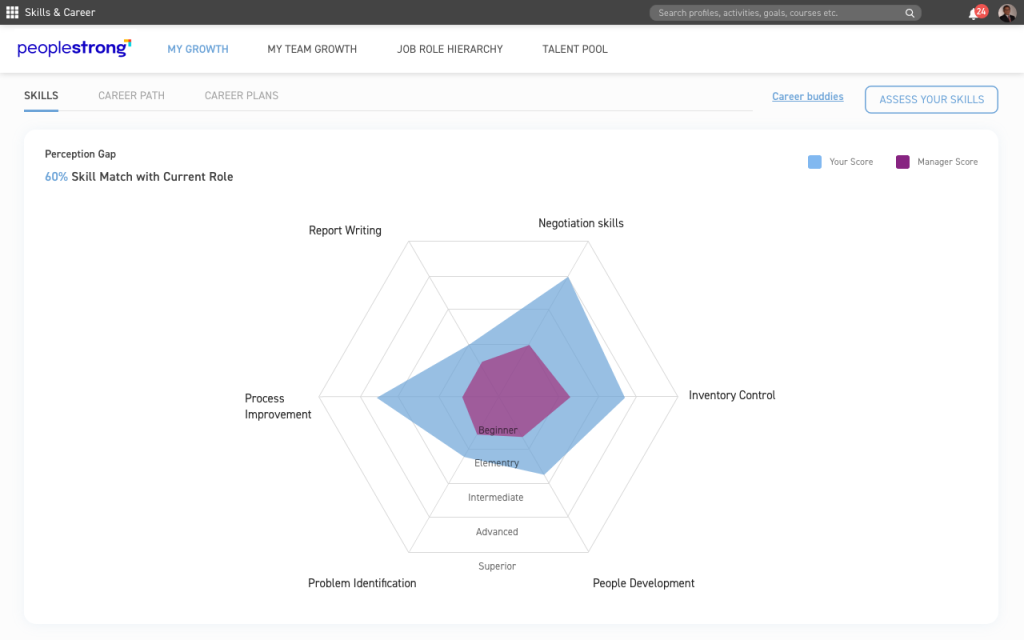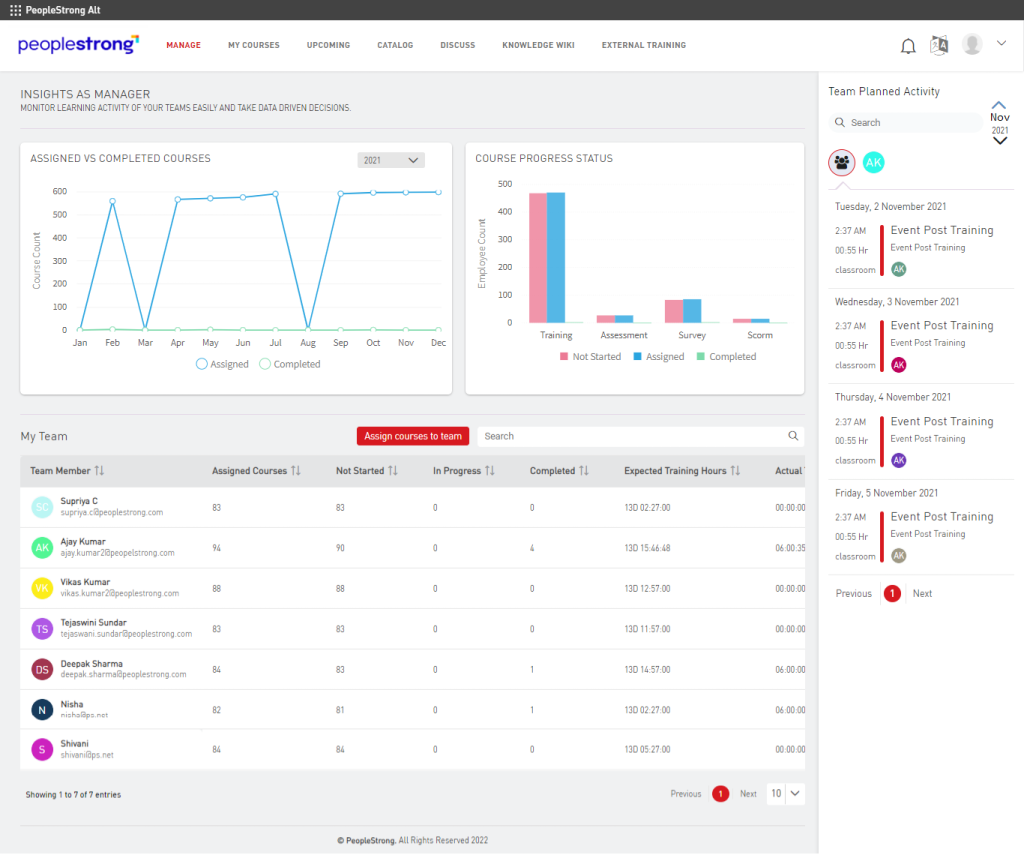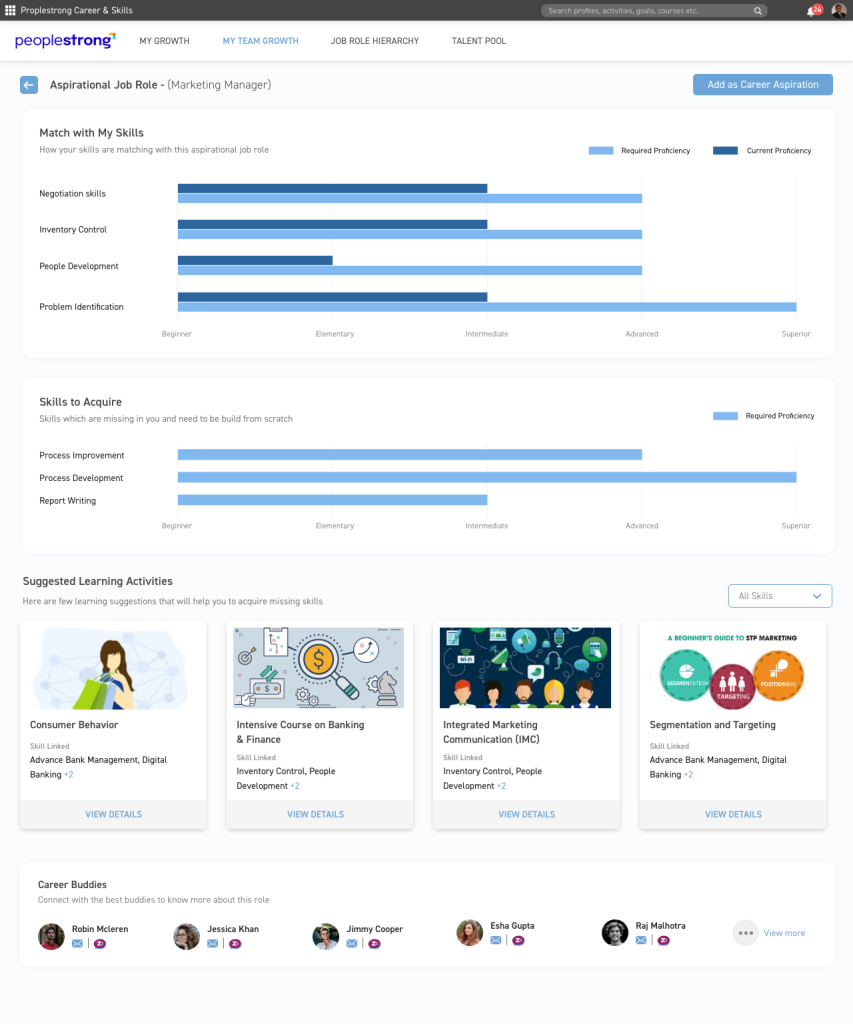With the right talent management playbook, organizations can build high-performing teams that deliver critical outcomes and outperform their competition.
This article has distilled our learnings from 15+ years of implementing talent management cycles at top organizations such as Inspiro, Aditya Birla Group, Tata, Kotak, Fly Dubai, Paytm, and Air Asia.
Read on for simple strategies you can execute to attract and help your people and your business succeed in today’s talent economy.
1. Define the skills across the organization based on job designations
Job designations serve as the social authority given to employees based on their contributions to the company.
Rather than getting into the complexities of defining job roles, it is crucial to determine the technical and behavioral skills associated with these designations.
It is important to note that there are many things that could be improved with the traditional approach to defining job roles. Some of these are:
- Once the competency framework is defined, the role typically does not delve deeper into the practical details, thus not giving enough context to the employee and their manager
- The competency framework ends up like the treadmill that people buy to get fit but end up not getting used

To define and keep your skill framework up to date, here are some of the high-level steps that we suggest
- Assign a senior HR Manager to maintain the skill framework or delegate this task to HR business partners. Every year, the skill framework must ideally be updated and published across the company
- The HR Manager, along with business unit heads and key managers within those business units, can then validate and refine the skills for each designation
- Publish the skill framework across the company and collect feedback from all employees, including managers, with the help of a talent management software
2. Map the skills across the organization and create insights

Skill insights help people leaders make better decisions across the board.
To get these insights, run 360° assessments on those skills for each employee. Ideally, the evaluation should not be linked with performance reviews.
Once the assessment is over, transparently show the skill insights to employees and managers. Let them identify which skills they need to work on based on feedback from peers, managers, and colleagues across teams.
Communications regarding this must be well-organized lest there is any misunderstanding.
3. Plug the skill gaps based on these assessments

Once the assessments are done and the derived skill insights are shared across teams, it is time to suggest courses and training programs that will enhance the skills of your employees.
One solution is to leverage the creator economy and let your high-potential employees create content aligned with those skills.
Another solution would be to leverage a LMS software to cater to your employees.
Let your employees define the IDPs (Individual Development Plans) aligned with the courses on your LMS. Let there be feedback and assessment on those IDPs and your business goals in the performance reviews to enhance accountability among employees to finish those courses.
4. Run HiPO (High Potential) programs for different personas
HiPOs are those in your company who generate maximum revenue and value for your customers. But data points to identify HiPOs need to be fixed in most companies.
What if you combine the skill assessment data with the performance ratings and get the list validated by business unit heads for additions and deletions? Once this HiPO list is validated, you can run different programs customized for various levels of HiPOs.
Early career HiPOs aim to get more money and move faster to the next role. They are the ones who would like to take on additional challenges.
They are ambitious and ready to switch jobs if their expectations are unmet. Assigning them gig projects, extra targets and a few more training programs will help them evolve.
If they can achieve those projects, targets, and complete those training programs, move them on to the next role immediately. Do not wait for your annual performance review activity.
For mid-career HiPOs, in addition to giving them additional gig projects and targets, conduct extensive leadership development programs that bring in those required behavioral changes, enabling and empowering them towards the next level of leadership roles.
For the people in your leadership team, who are HiPOs, take them through training programs on how to coach people. And then set in targets for them to coach employees at all levels.
5. Manage your talent initiatives & programs
In addition to running your HiPO programs, you will have to run other talent management initiatives. These may include programs to boost employee engagement, empower first-time managers, and so on.
These can be managed successfully by following a standard process of the following:
- Identification & shortlisting of talent
- Providing L&D opportunities, and
- Rewarding talent
These processes can be democratized by enabling managers to nominate their team members based on specified parameters.
The latter can be trained by giving them standard IDP (Individual Development Plan) activities. And then, once they are ready, they can be placed in the relevant internal positions down the line.
6. Simplify talent mobility
Finding and hiring talent is already a massive challenge for most companies. When we ask companies if their employees can apply to IJPs (Internal Job Postings) easily and move freely within their department, the answer is mostly no.
Even if it is easy to find an opening, the managers do not allow team members to move to another department.
An ideal process and system will suggest relevant openings to relevant employees, regardless of their position in the company’s structure. It allows them to move internally without restriction/bureaucracy if their skills fit in.
7. Share people insights beyond HR
Connecting the dots between people data and the company’s strategic vision is a challenging task.
You must go one step further and ask yourself what business outcomes you are trying to impact. Once you do that, your people analytics goes beyond solving personnel problems and starts addressing tangible business outcomes, helping translate insights into action. Of course, you must enable your managers and business unit heads to get those people insights in real time.
The insights we are talking about are more along the lines of:
- Are your HiPOs well-engaged?
- Which skills are lacking in your team? And are people enrolled in those training programs that will enable these skills?
- What is the cost associated with consistent low performers, and are they assigned PIP plans?
- Hiring recommendations to managers across the team, like from which companies and qualification levels they should hire
- Which managers need to perform better?
Many HR leaders have these thoughts on what needs to be done but fail when they pass on the baton to their HR teams for implementation. With these high-level steps, you can take your talent strategy to the next level.
A Talent Operating System For Your Entire Organization
PeopleStrong’s AI-powered, Integrated Talent Management platform helps you recruit, mentor, retain, and engage a future-ready workforce. The AI-Powered platform creates a trifecta of data, capability, and performance to bring insights into an employee’s journey from recruitment to their growth and beyond.
With this patent-ready technology, PeopleStrong uses data from multiple systems to build a centralized black box of skills and applies a layer of Artificial Intelligence to deliver a talent management strategy that enables companies to manage their talent better for today and tomorrow.
Unleash the true potential of your workforce
Check out PeopleStrong Talent OS

